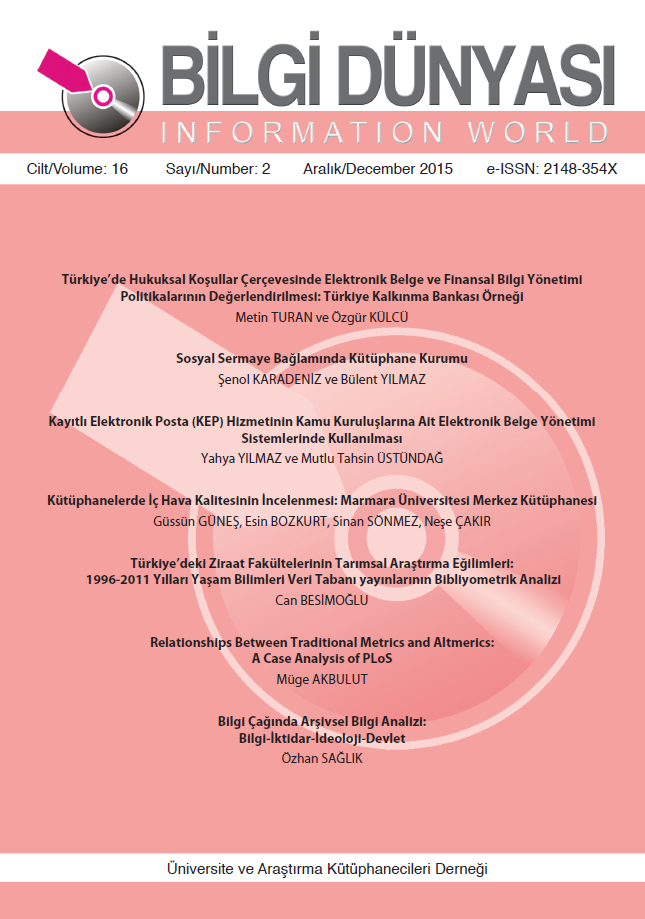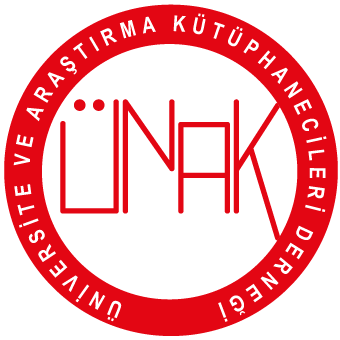Geleneksel Metrikler ile Altmetri Metrikleri Arasındaki İlişkiler: PLoS Analizi Örneği
DOI:
https://doi.org/10.15612/BD.2015.470Anahtar Kelimeler:
Bilbiyometri, altmetri, Article Level Metric (ALM)Özet
Dijital ortamda herhangi bir şey yaratma ve kolayca herkese sunma olanağı devasa bir materyal hacmi yaratmaktadır. Bilimsel yayın sayısı arttıkça da akademisyenler için en ilgili ve dikkate değer kaynakları diğerleri arasında seçmek zorlaşmaktadır (Henning ve Gunn, 2012). Bibliyometrik ölçümler akademik dergilerde akademisyenlerin birbirlerine olan etkilerini ölçmektedir. Fakat makalelerin tüm Web üzerindeki etkisi bununla sınırlı değildir. Altmetri (altmetric) ise mevcut bibliyometrik ölçümlerin yanı sıra makalenin tüm Web üzerindeki etkisini içermektedir. Bu çalışmanın amacı; PLoS Article Level Metric (ALM) veri setinin analiz edilerek geleneksel metrikler ile altmetri metrikleri arasındaki olası ilişkileri incelemektir.
İndirmeler
Yayınlanmış
Nasıl Atıf Yapılır
Sayı
Bölüm

Bu çalışma Creative Commons Attribution 4.0 International License ile lisanslanmıştır.






